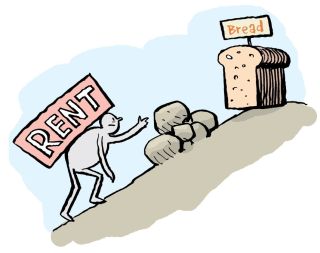Locked Out - Even With Extra Supports

Locked Out of the Market is a quarterly report published by the Simon Communities of Ireland based on a snapshot survey conducted over three consecutive days. This latest version (the 26th in the series) published in June 2022, covers three days in June 2022 and uses data from Daft.ie (an Irish property website that lists the asking prices for properties to both rental and buy) to track the number of properties advertised to rent that fall within Housing Assistance Payment (HAP) limits.
They found there were just 657 properties available to rent at any price within 16 areas [1] over the three dates surveyed. This is a 70 per cent decrease year on year and another decrease from 737 properties in March 2022 which had in turn fallen from the 1,349 properties available in December 2021.
Of the total number of properties available to rent, only 5.6 per cent (37) were available within the standard or discretionary HAP limit in at least one of the four household types [2] . Of those, only two properties were available within the standard HAP rates during the three-day study period across all four household types. This is a notable drop from 80 properties available in this category in January 2022 and even more so from the 906 HAP properties available in June 2021.
Renting in Rural Ireland
The majority of all available properties, 69 per cent, are to be found in the Dublin area. The story is the same for HAP properties with 27 of the total 37 HAP properties (73 per cent) located in Dublin. In Dublin the discretionary rate allows up to an additional 50% on the standard rate; this is limited to 20% elsewhere in the country. Nine of the 16 areas surveyed had no properties available for any HAP tenants (Cork City Centre, Dublin City Centre, Galway City Suburbs, Galway City Centre, Co. Leitrim, Limerick City suburbs, Limerick City Centre, Sligo Town, and Portlaoise).
All household types finding it difficult to secure accommodation
For single-person households, just one property in Athlone (the Report refers to one-bedroom units) was within standard HAP limits across the 16 areas surveyed. When the discretionary increases to the HAP limits were applied, only one more property in Waterford matched the availability criteria. To put this in context, over half of all households on the social housing waiting lists in 2021 [3] were single-person households (32,551, 54.9 per cent).
For a couple with no children, only two properties (one-bedroom units) were within standard limits, rising to 15 under the discretionary limits, with the majority of these properties to be found in Dublin.
For a couple or lone parent with one child, there were no properties (2-bedroom units) available within standard HAP limits with only 12 properties becoming within reach when the discretionary extra was applied. All of these were to be found in the Dublin area.
For households consisting of a couple or lone parent with two children, there were no properties (2 bedrooms or more) available within the standard HAP limit and a further 20 properties available within the discretionary HAP limits, (12 of these overlap with the properties available to one child families).
Housing Assistance Payment Rates Increase
The Report notes the recent announcement to increase the discretionary rate to 35% for areas outside Dublin and that when collecting this data, only five extra properties would have been included using this new rate. The lack of accommodation for single adults is a concern with the Department of Housing reported the highest number of single people in homelessness on record at 5,143 in March of 2022.
Social Housing, not Social Housing Supports
The Housing Assistance Payment is not delivering as a form of social housing support. It is not providing choice, security or affordability. The lack of availability means that either the tenant or Local Authority ends up paying more than expected, or allowed for, within their respective budgets. For those who cannot make up that difference, homelessness is the most likely outcome.
The private rented sector is not the solution to a public housing crisis. In fact, a 2019 Report by Focus Ireland found that 70 per cent of families accessing emergency accommodation in Dublin in 2019 came from the private rented sector. [4]
Double Social Housing Stock by 2030
Other European countries which we would like to emulate have a social housing stock that is 20 per cent of their overall housing stock compared to 9 per cent in Ireland. The real need for social housing is under reported as those in HAP tenancies, DSGBV refuges, Direct Provision and many at risk of losing their home due to mortgage arrears are not included. We estimate the real numbers in housing need are closer to 133,000. To achieve the target of 20 per cent by 2030, Government must double its Housing for All targets at an additional cost of €1.4bn, meaning the overall construction budget would be closer to €3bn in 2023. This investment will require a skilled workforce. Inclusion of a new construction apprenticeship programme whereby one in every fifteen is required to be an apprentice earning at least the Living Wage must form part of any rebuilding scheme. This would also result in an additional 60,000 properties, currently being used as social housing, entering the private rented sector for use by private tenants.
[1] Cork City Centre, Cork City Suburbs, Dublin City Centre, Dublin City North, Dublin City South, Galway City Centre, Galway City suburbs, Limerick City Centre, Limerick City suburbs, Portlaoise, Kildare (selected areas), Athlone, Sligo Town, Dundalk, Co. Leitrim, and Waterford City Centre.
[2] Single person; Couple; Couple/One Parent and One Child; and Couple/One Parent and Two Children.
[3] https://assets.gov.ie/219921/a5419e65-a5ff-4c84-80de-1f18919e0c73.pdf